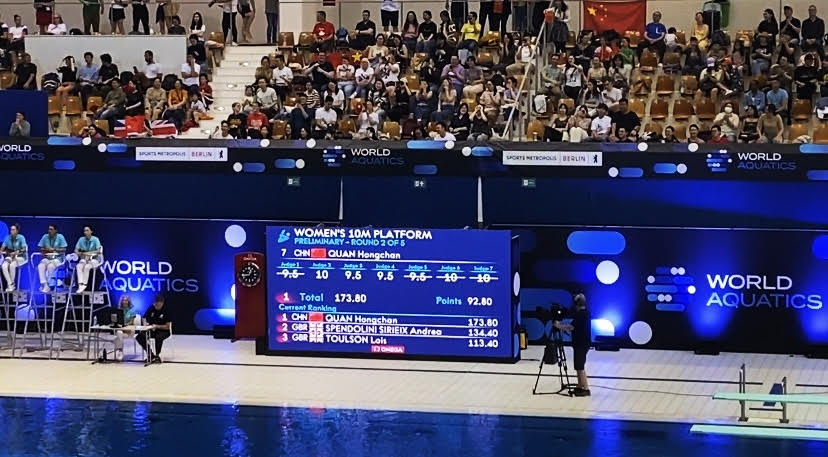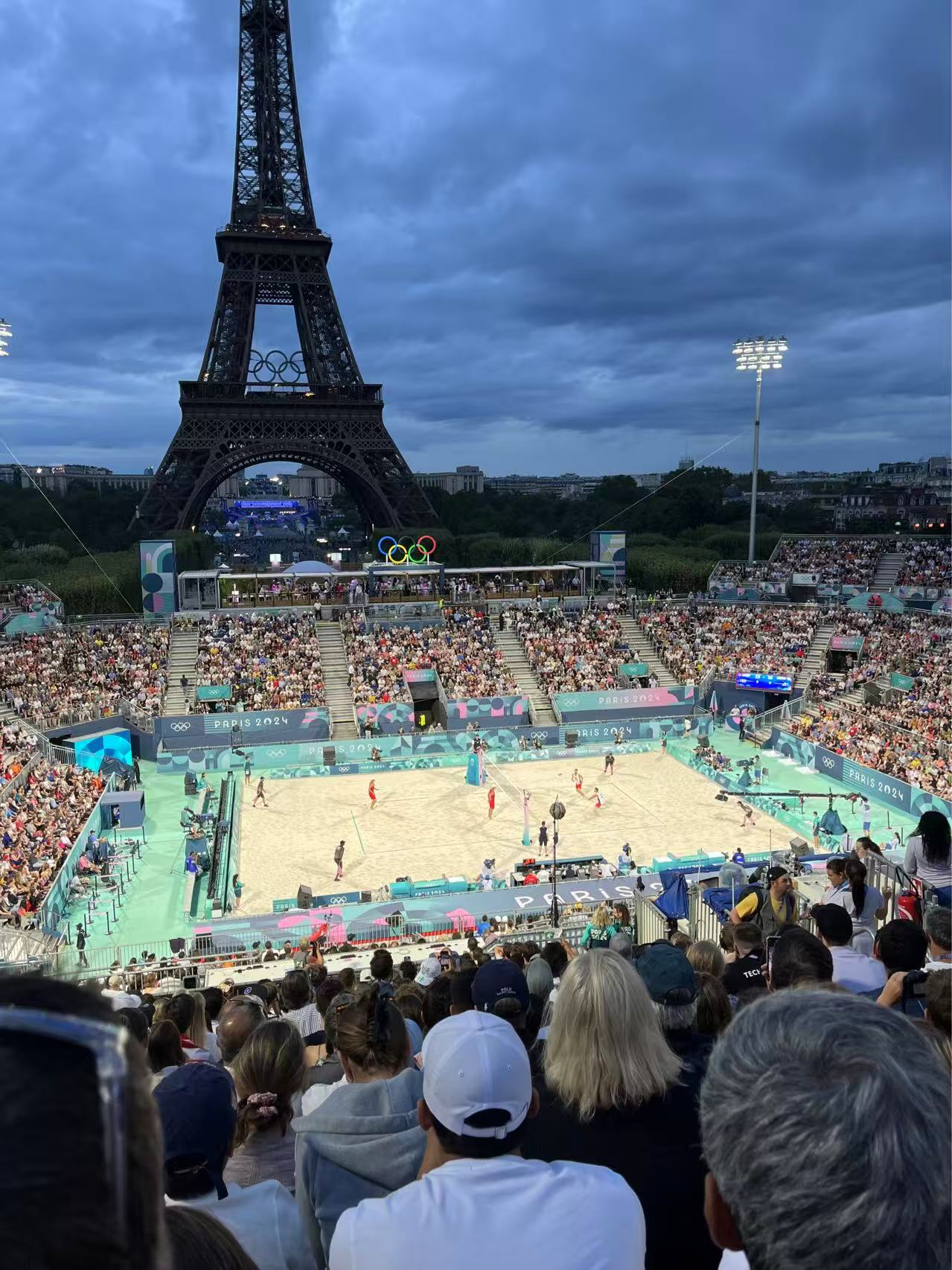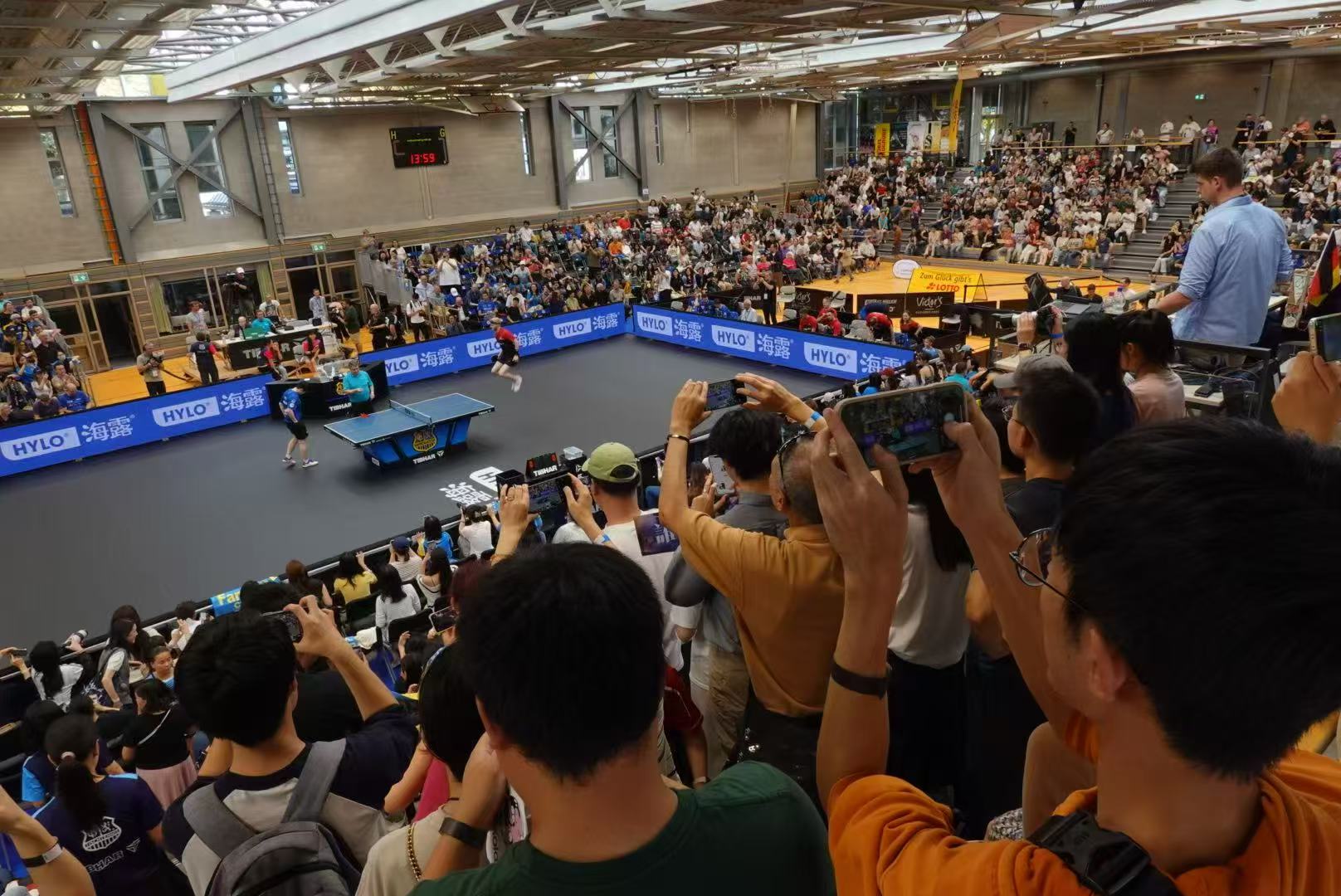The Changing Game: How Competitive Sports are Evolving
Two decades ago, our engagement with competitive sports meant crowding around TV to watch the Olympics live, cheering together in a bar when team scores, attending a tennis open and getting an autograph, or buying a co-branded cap of a legendary player ... from a spectator’s perspective, nothing has been drastically changed. However, the industry has been undergoing a steady revolution.
My previous visit to the German Table Tennis Bundesliga sparked my interest in the commercial mechanism of competitive sports, leading to several conversations with investors in the sports sector. What emerged was clear: tech innovations impact far beyond incremental improvements of the industry, but reshaping consumption patterns, revolutionizing business models, and expanding the sector's overall market landscape.
Performance Analysis
The evolution of smart wearables has expanded the scope of monitoring data. Beyond basic physiological metrics (i.e. heart rate, blood oxygen, sleep patterns) and fundamental movement indicators (i.e. pace, swing count, calories), we have access to highly specialized data, including force exertion, gait analysis, and joint stress etc. Together with advances in sensor tech and computer vision that have unlocked a new tier of dynamic in-game data, we are able to achieve more comprehensive analysis than ever before.
The enriched data pool has expanded AI capabilities far beyond computer vision-based motion recognition. With predictive analysis, systems can fuse an athlete's physiological profile with real-time metrics, from joint angle to muscle fatigue, to enable injury prevention and more scientific training. This approach is exemplified by products like Exakt Health (DE) and Pulse Sport (NL).Meanwhile, machine learning enables complex quantification and analysis of each athlete's unique technical profile and strategic approaches. By modeling and evaluating discrete movements and applying clustering algorithms, these systems help identify latent potential at both individual and team level, to enhance training efficiency, to enable dynamic tactical optimization, and to bring data-driven rigor to talent discovery. Notable examples include SportAI (NO), which provides real-time technical feedback and performance tracking; Soccerment (IT), which delivers pattern clustering and tactical insights through soccer data analysis; and ai.io (UK), which harnesses advanced AI, machine learning and deep learning, to supportperformance analysis, athlete development and talent scouting.
The Olympic motto of "Faster, Higher, Stronger" now echoes a new dimension. Competitive sports (especially elite sports) are no longer solely showcases of physical excellence but a dual race—on the field of play and in the realm of technology. Taking a step further,"the data impact in sport will be a shining example over other industries. Very much like why Hugo Inglis (former field hockey player, 4-time Olympian) founded High Impact Athlete. They has a very different grasp on how they can best use data like in sport in charity, particuparly track the impact on how decisions are made." added Tom Field, the Head of Sport Investment of Republic Europe.

World Aquatics Diving World Cup ©Helen
On the other hand, the use of data calls for more discretion, like the "Project Red Card" in the Premier League faced players' backlash over data sales without their consent otherwise. While this data availability is vital for model training in the age of AI and revenue generation in data economy, the sustainability of this business model hinges on one unarguable premise: the adequate protection of athletes' privacy and their legitimate interests.
Viewing Experience
The rise of streaming platforms, from global giants like Netflix, YouTube to live-focused services like TikTok and club-owned channels like Real Madrid TV, has begun to eclipse traditional TV broadcasting, changing the viewer behavior, creating broader revenue streams and expanding global reach. More significantly, they enable powerful tech integration: ESPN uses AR to overlay real-time data and graphics during live broadcasting, so that the computer vision insights and sensor data collected can be seamlessly incorporated into the feed, while generative AI adds even more value through instant content creation. These innovations specially heighten immersion in technical sports like Formula 1, freestyle skiing, and snooker. Moreover, through big data analysis or viewer preference, content can be increasingly customized, paving the way for more flexible business models.
By lowering the barrier to entry, digital platforms effectively funnel new viewers toward the live stadium experience. Christina Maria Hummer, an investor at Best Night VC, shares the perspective: “Easy access to streaming allows sports to reach audiences they hadn’t previously engaged. That exposure can then draw them into experiencing events in person.” Therefore, in order to convert these new viewers into loyal fans, and cultivate a habit of live spectating, technological enhancements within stadiums have become more crucial than ever.
At the Ryder Cup golf course, besides the security technology, the venue is equipped with 5G and Wi-Fi 6E connectivity, along with sensors and cameras that monitor the course and matches in real time. AI systems process millions of scorecard combinations to deliver dynamic probabilities, while generative AI offers Q&A assistance onsite, which are all streamed directly to the official event app. Similarly, Tottenham Hotspur's stadium enhances the live experience by enabling spectators to scan their surroundings to pull up real-time players and match data on demand. At the same time, the all-in-one apps, which covers ticket booking, in-seat delivery, data-driven navigation, AR games, and post-match analysis,has essentially become the new standard for modern sport events. Similar applications include the Bundesliga app and Scuderia Ferrari app, which also generate valuable user data to support dynamic pricing, smarter venue management, and structural improvements to events.
Away from commercial considerations, it is also worth highlighting how the Paris 2024 Olympic venues introduced assistive technologies such as real-time navigation for visually impaired audiences and live captioning for hearing-impaired visitors, to ensure an inclusive experience for all spectators.

Paris Olympics Beach Volleyball ©Yahan
Fan Engagement
Gone are the days of the passive spectator. Through content preference, real-time stadium scanning, and interactive live comments, sport fans have become active participants with growing expectations for engagement.
A 2025 Capgemini survey of over 12,000 sports enthusiasts revealed that 58% are interested in simulating alternative tactics and outcomes during match replays, and the demand is met by AI-powered applications like Hudl Sportscode. While platforms like FanCollex embed NFC and AR into official merchandise, allowing fans to unlock virtual stadium tours and player stories by tapping their collectibles, forging a deeper emotional bond with their teams.
Major tournaments and clubs are embracing this trend as well: Wimbledon partnered with American Express to create a VR experience where fans can virtually compete against Andy Murray. Similarly, Manchester City FC collaborated with Sony to build a metaverse version of Etihad Stadium, using Hawk-Eye and 3D player tracking to enable fans to watch matches, play games, and socialize in an immersive digital environment. As Andy Marston, Head of Corporate Venture at Players Fund, aptly summarizes: "The most interesting organisations are blurring lines between storytelling, shopping, and belonging. They’re turning fans into members of an ecosystem, where engagement translates into real loyalty and commercial value."
The monetization of sports fandom reveals a cultural divide in Europe and the US. In Europe, the relationship is rooted in identity and belonging, which naturally drive their consumer behavior, causing clubs carefully stewarding this emotional capital. In contrast, American sports embrace a more commercialised and entertaining approach, directly stimulating a massive wave of innovations in the fan-engagement startup sector. Numerous ventures now focus on building digital fan communities, often through token-based systems that allow supporters to participate in club polls, in order to win tickets, merchandise, or exclusive experiences in return. Leveraging social media platforms, the NBA partners with X (formerly Twitter) to publish exclusive content, using algorithmic targeting to concentrate audience attention and enhance the value of its advertising placements.
However,caution is warranted, as an excessive focus on engagement metrics in a community environment risks creating information rooms for fans that amplify extreme sentiments. While born from innovation, such environments may ultimately foster toxic subcultures where authentic interaction gives way to emotional manipulation. The role of sports icons should be to inspire self-improvement, and their influence should also be safeguarded from over-commercialization in the algorithmic hype and short-term monetization. Sustainable fan engagement relies on a shared commitment among platforms, supporters, and athletes themselves to uphold responsibility and preserve the true spirit of sport.

Table Tennis Bundesliga ©Tracy
Emerging Leagues
As highlighted in the previous article Is Now a Good Time to Invest in Sports Tech?, the rise of emerging leagues has become a key focus for many investors. These disruptive ventures are reshaping fundamental aspects of traditional competitive sports, from competition design, operational model to the very size of the addressable market.
Kings League(ES), for example, presents a reinvention of the traditional football game. It features 7-a-side teams and condensed 40-minute matches, while incorporating unexpected elements like sin-pin penalties, double-score goals, and player swaps to heighten drama. Notably, fans also have a say in determining certain rules. Commercially, the league has also rewritten the playbook. It sources talent through open trials from a pool of over 10,000 amateur players, eliminating costly professional contracts and making salaries a minor expense, which significantly alters club economics. Furthermore, rather than relying on traditional broadcast deals, the league streams matches for free on Twitch or YouTube, deliberately prioritizing accessibility over gatekeeping.
Another key innovation lies in its influencer-driven governance. The league partners with top streamers and football stars such as Neymar Jr. and Sergio Agüero, who serve as club presidents. These high-profile figures not only lend credibility and massive reach but also actively engage in club-level sponsorship deals and live-stream engagement for digital tipping in return, as well as participating in the share of league-wide income, paradigming a model that merges sports, entertainment, and community.
The fast-paced, entertaining formats and their digitally-native operations are perfectly aligning with the consumption behavior of Gen Z (65% viewers under 36). According to Inside World Football, the Kings World Cup Clubs 2025 attracted over 100 million viewers across 120 countries, while the final at Paris La Défense Arena also drew a live audience of more than 25,000. The massive young viewership has drawn major brands targeting youth demographics, including Adidas, Red Bull, Spotify, and Santander. As the founder Gerard Piqué stated: "since day one we are profitable."
The new model is rapidly spreading to more sports like basketball, golf, cricket, and tennis, but do they threaten or strengthen the elite sports market? From a commercial perspective, they do both. While these viewer-centric leagues compete for attention, they also serve as accessible entry points, introducing sports to demographics that traditional models have struggled to reach, many of whom may eventually gravitate toward elite competitions. This dual role is perfectly captured by SportTechX founder Rohn Malhotra with the term "feeder": These new models act as catalysts, pressuring elite sports to innovate in rules and business models; they function as incubators, cultivating broader interest in sports disciplines; they also create pipeline value—delivering not just new fans to established leagues, but also inspiring the next generation of future athletes.
A growing competitive sports ecosystem is inherently value-creating. Entertaining framework may be the hook, but it doesn’t overshadow the appeal of elite athleticism. Traditional elite sports could evolve to engage modern audiences without losing what makes them compelling: integrity, excellence, and the pure pursuit of greatness.
Conclusion
Technological innovation has been permeating every facet of the competitive sports industry, from athletes and spectators to clubs and leagues. Spectators are no longer mere consumers; clubs are no longer the sole center of influence. The market continues to expand, while the traditional business models are being redefined. The entire ecosystem is undergoing a profound transformation. In this dynamic environment, clinging to legacy approaches is no longer sustainable, regardless of the sport or one’s role in the industry value chain.
As Luigi De Siervo, CEO of Serie A, remarked when announcing the collaboration with Kings League: “They have a fresh and dynamic approach to the sport, which has resulted in one of the most interesting and innovative creations in our game’s long history...We have to continue to try and speak to the next generation of football fans...open up new opportunities, capture a wider audience, and further strengthen Serie A’s position as one of the premier football leagues in the world.”
Fortunately, we see legendary institutions across sports actively embracing this wave of change, from the Ryder Cup and Wimbledon to the Premier League and the Bundesliga. And more encouragingly, leading the change are former professional athletes like Gerard Piqué (former footballer of FC Barcelona), founder of Kings League, and Shaun White (former snowboarder and skateboarder), founder of The Snow League. They are joined by a growing cohort of ex-professionals such as Koen Bosma and Mason Mount, who are now leveraging their captial and expertise to drive those innovations within venture capital funds or other associations.
From an economic standpoint, industrial evolvement represents a thrilling opportunity: it enables optimized resource allocation, improved efficiency, market diversification, and systemic upgrades that collectively build a more resilient and vibrant ecosystem. The world of competitive sports is no exception.
(来源:钛媒体)

